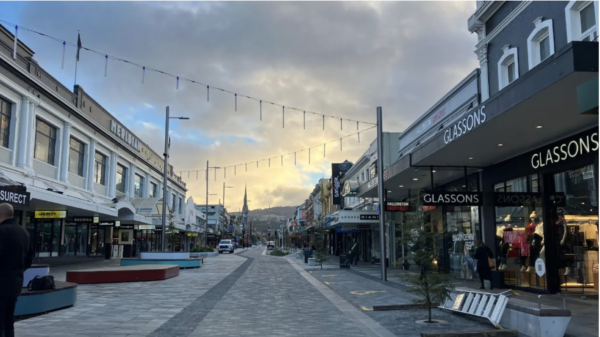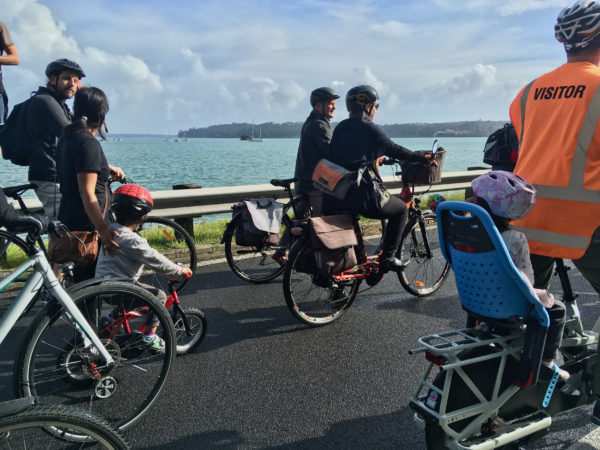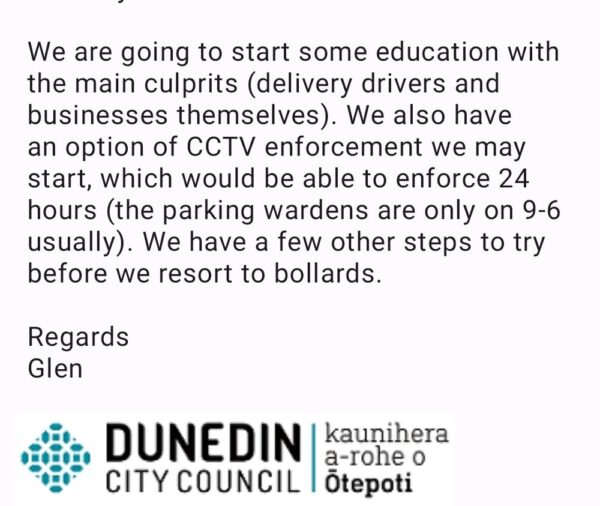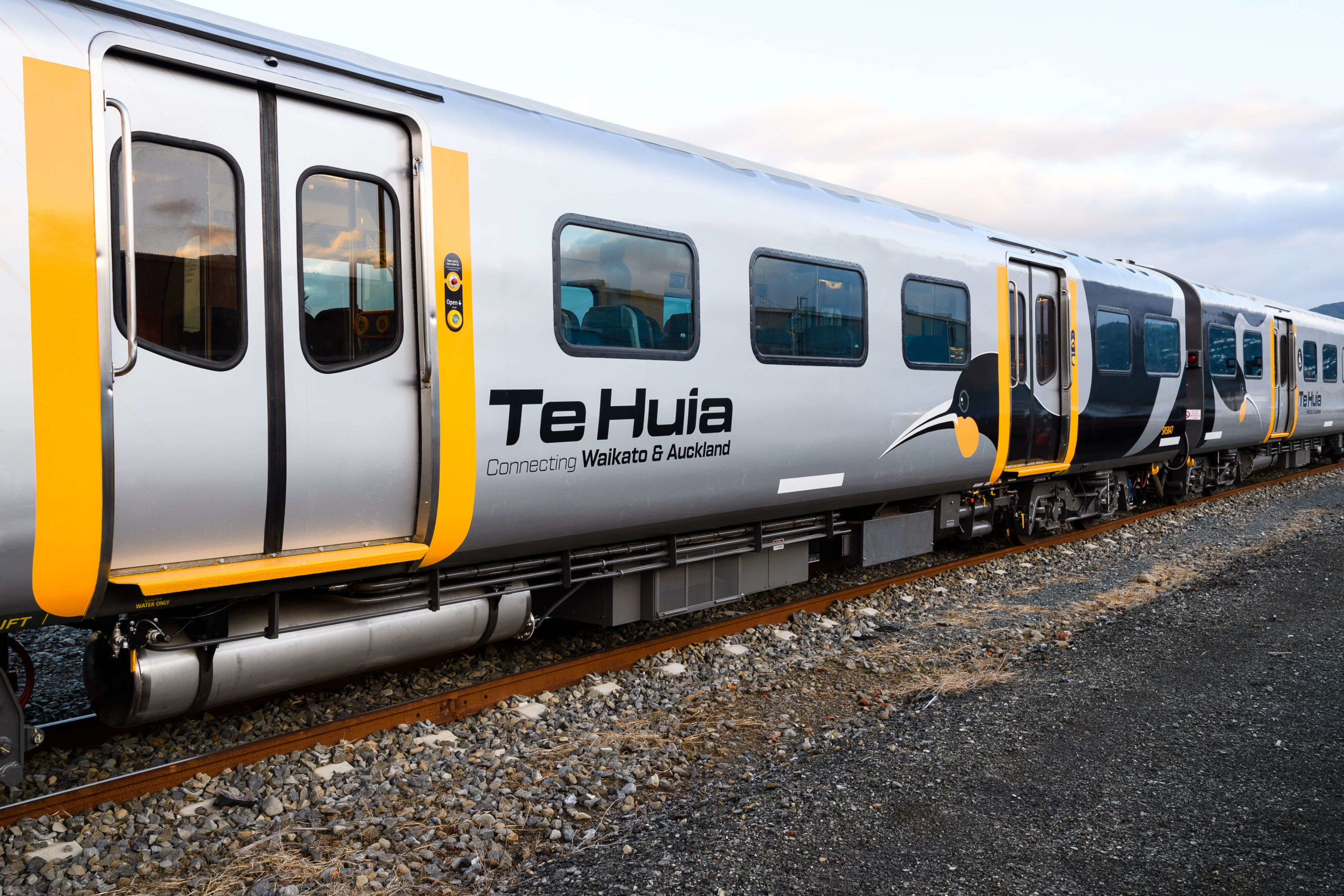Brrr, the first cold snap of the year. Hope you’re rugged up nice and warm. Here are some stories that caught our eye this week…
This Week on Greater Auckland
- On Monday, we had a post from a new contributor, Connor Sharp, who dug into the public feedback on the Long-Term Plan.
- On Tuesday, Matt looked at the future of Te Huia, the intercity train between Auckland and Hamilton.
- On Wednesday, Matt took a look at two recent announcements about public transport: FareShare and the Inner West rail rebuild.
Rail Unreliability Continues
Earlier this week Kiwirail were celebrating the completion of the rebuild of the inner Western Line and almost immediately we get hit with more rail unreliability with the same issue impacting services over multiple days this week..
There are widespread cancellations and delays across all Auckland train lines on Thursday morning due to a “track infrastructure issue”.
Auckland Transport warned the issue is affecting all train lines in the city and said busses are accepting train tickets.
“All Western Line services are cancelled between Britomart and Newmarket, due to the rack infrastructure issue at Britomart,” Auckland Transport said on X, formerly Twitter.
“Platforms 2 & 3 at Britomart are out of order until further notice. Expect delays and possible cancellations.”
Onehunga Line services are also cancelled until further notice.
Will we ever have a reliable network?
Big wins for Wellington
Huge news this week for fans of more homes, and a big win for Pōneke itself. On Wednesday, Housing Minister Chris Bishop signed off on Wellington City Council’s plans to upzone whole chunks of the city, with immediate effect Joel MacManus of the Spinoff gives a great overview of the details.
Housing advocates said the plan was probably the most ambitious in the country, going beyond Auckland’s 2016 unitary plan. With the minister’s decision, boundary set-backs for developments of one to three units have been removed, the city’s character areas of villas cut back from 306ha to 85ha, and six-storey apartments allowed within a 15-minute walk of the central city and a 10-minute walk of train stations.
Even in the suburbs where six-storey apartments were not allowed, three medium density townhouses of three storeys would be allowed on most sections.
The other Welly win was the failed judicial review initiated by Foodstuffs, on the grounds that council should have consulted it more or harder or something, regarding a bike lane past a New World supermarket.
The Spinoff’s Joel MacManus follows up his earlier reporting (Plucky Foodstuffs takes Bold Stand against Children on Bikes) with an update entitled Plucky Foodstuffs Crushed by the Iron Fist of Big Bicycle. You might want tissues for this one.
With an economic downturn, rising inflation, and a new grocery commissioner cracking down on their cherished duopoly, times have been tough for Pam and Charlie Foodstuffs, who own and operate the Thorndon New World store, as well as all New World stores around the country.
…
Foodstuffs pleaded with the council to have mercy and move the cycleway further away from their good-hearted, car-driving customers. They made the reasonable suggestion to shift the cycleway to the other side of Murphy Street, in front of a motorway offramp. Their polite request was denied because, well, motorway offramps are a terrible place to put bike lanes.…
“It was like we were shouting into the wind. They only seem to listen to fat cats in the bicycle lobby. Small retailers like us may as well be invisible,” Pam said.
Looking good, Ōtepoti!
Last week Dunedin celebrated the opening of its gorgeously made-over main shopping street. The multimillion dollar upgrade for George St includes new paving, engraved with quotes and lyrics from Dunedin art and music luminaries; there’s also lots of seating, native planting, a playground… and still some parking outside shops, although traffic is now one-way only.
As reported by Stuff’s Hamish McNeilly, work was finished half a year ahead of schedule and within budget. The “Totally Georgeous” project was initiated under former Mayor Aaron Hawkins, and ironically was opened by the new Mayor, Jules Radich, who had been a vocal sceptic.

All that lovely paving may tempt some thoughtless parking, but don’t worry: as shared by local Jess de Heij on Bluesky, Dunedin City Council is already onto it. Other civic transport departments could take notes on this straight-up approach to enforcement.
Bike parking
StreetsblogNYC reports that New York City is looking to install 500 secure bike parking stations over the next five years, an important option in a place where reportedly one in four households has had a bike stolen:
Secure bike parking is a necessary in a city where bike theft requires the use of industrial chains so heavy they scare and even baffle the police. Many apartments and apartment buildings in the city don’t have room for bike storage.

In local bike news…
A couple of good reads from our friends at Bike Auckland: firstly, a fresh Project Watch roundup of bike infrastructure installed in the last year or two, focusing on the central city, with other area updates in coming weeks.
And secondly, Bike Auckland has announced on behalf of Waka Kotahi The New Zealand Transport Agency that the promised “Walk It, Wheel It” Sunday ciclovia-style events on the Auckland Harbour Bridge, set to take place on summer weekends, have been officially abandoned.
“The [Walk It, Wheel It] programme fell far short of permanently closing a yawning gap in Tāmaki Makaurau Auckland’s cycling network but it would at least have given Aucklanders a taste of what it would be like to cross the harbour using active modes,” says Bike Auckland chair Karen Hormann.
“We’ve now learned that the programme has been formally shut down which means that even the most modest efforts to provide transport options over the harbour bridge are now off the table.”
“It is just the latest example of transport agencies backtracking on their investment intentions for cycling and walking. When you turn your back on cycling and walking you’re turning your back on the environment, on public health, on congestion reduction and on climate change. Auckland deserves better.”

When driving is not an option
We’re big fans of The War On Cars podcast, and this recent episode highlights transport issues for the many people who can’t or don’t drive. Reportedly one-third of the US population can’t drive, due to disability, age, cost, legal status and other factors. We face the same issues in Auckland, where one in four of us doesn’t have a drivers’ licence.
Why we’re fighting to save Te Huia
An excellent piece by Georgie Dansey, who was an early convert to the Auckland-Hamilton train service and is now an ardent advocate for it:
The night before a morning meeting in Auckland, when I was setting an alarm for 5am to get up for my three-hour date with the traffic over the Bombays, [my wife] said, “Why don’t you just catch the train? There’s a cafe on board. And wifi – you can do emails. Or take a nap.”
To be honest, she had me at nap. As someone whose motto is “work smarter, not harder”, the idea of napping during my commute just made sense.
I sat at a little table and read some emails and bought my ticket from a train person… After doing an hour of work I wandered down to the train cafe and got a cup of tea. I may have had a short nap. We arrived at 8.30, I walked to my meeting (15 minutes) and at the end of the day, I trained back home again. More emails, more tea. Couldn’t confirm, but likely more nap. Safe to say I was completely sold.
Safer streets for Kiwi kids
Stratford joins the list of cities and towns around the country taking tangible steps to protect their most precious citizens. This week, the town lowered speed limits around several schools, following through on a plan it consulted on last year. Notably, the council rejected the idea of variable speed limits, which only ask drivers to slow down for short periods in the morning and afternoon:
The new speed limits are fixed, meaning that drivers will need to observe the limits 24 hours a day, council roading asset manager Steve Bowden said.
“Many families are taking advantage of school playgrounds and facilities outside of school hours and it’s great to know that these community spaces will be a little safer 24/7,” he said.
Variable speed limits, which lower speeds during school drop-off and pick-up times only, would have come at a much higher cost for ratepayers, with the price for a single electronic variable speed sign, reaching up to $10,000.
“It might seem like a bit of an inconvenience to motorists, but it’ll have a big positive impact on children. We’ve heard from parents who aren’t confident letting their kids try biking or scootering to school, and lowering speed limits around kura can help to give a bit of reassurance.”
Meanwhile, speaking of safety
Put your phones down, people!
Meanwhile, in Hastings, a police checkpoint caught 20 drivers per hour using their cell phones while at the wheel. Only 20?
Now that’s saying something
Be non-average
Did you know that in the Auckland region, the average adult spends six working weeks a year, in a car, sitting down?? We learned that from this great post from Auckland Transport on the health impacts of our transport system, featuring public health doctor Michael Hale interviewed by Transport Safety lead Ping Sim.
Travel corner
Just in case you were thinking of cycling from Croatia to Albania, a new trail offers just that:
This morning I was the first ever cyclist to try the 5000km zigzag route. From the Slovenian village of Jasen I biked alongside trail founder Jan Klavora. It’s taken him six years to devise the naturally splendid route through Slovenia south through Croatia, Montenegro, Bosnia & Herzegovina, Serbia, North Macedonia, Kosovo and Albania. No wonder he looks fit.




 Processing...
Processing...
Surprised the introduction of 24/7 paid on street parking in Auckland CCPZ wasn’t on the list.
From the end of June AT are starting to charge people to store their cars on public assets.
https://at.govt.nz/media/a1cbzqhi/ccpz-parking-changes-map.pdf
We have the same people, and organisations, like our Chambers of Commerce, that are demanding that Councils, should be run more like businesses.
But these same people, and same organisations are those that go absolutely apoplectic, when any council, dares to suggest its billions of dollars of property assets in parking buildings and surplus road space, surplus to actual movement requirements, should return a commercial return on the value of assets employed.
Instead, they are demanding that publicly owned land and building assets employed in storing theirs, and others, privately owned vehicles, should continue to to be provided free, or a non commercial basis.
Hypocrites.
Any house or apartment should include off street parking for the number of cars, bicycles and scooters and so on its residents wish to own or residents should park off street elsewhere. Adding on street bike parking in city streets instead of eliminating all on street parking seems like a backward step.
They already do. Some have parking, some don’t. It’s called the market. People should be buying/renting the dwelling that suits their purposes and not expecting council to subsidise their lifestyle.
There is plenty of choice out there.
KLK You seem to be expressing the same sentiment that people SHOULD park on their own property or in a space they rent. But that’s not what actually happens.
Actually a lot of dwellings in Auckland come with less parking spaces than the residents want to use. If this market you speak of was working New York wouldn’t be feeling a need to put bike parking on public roads and Kiwis wouldn’t be whining about having to pay overnight parking fees. Many city and suburban streets wouldn’t be reduced to single lane roads with vehicles parked on both sides. Roading space should be used for smoother movement of vehicles not storage of vehicles of any kind. In areas where road space for vehicle movements is at a premium dashed yellow lines should be the norm not the exception. Businesses should consider where their customers are going to put their cars, bikes, scooters and unicycles when they visit and arrange off road and off footpath spaces for that. That may be hard to retrofit to some older developments but should just be the mandated norm for new ones.
Also ‘The Council’ doesn’t subsidise anything, even though some think there is a magical money tree where it goes to to pick a few more hundred thousand dollars each time it needs to build a raised crossing or pay costs for a train. In reality its Ratepayers subsidise things.
On-street parking is a perfectly legitimate function for the 98% of Auckland roads that do not have a strategic movement function. If demand exceed supply, introduce a paid permit system for on-street park parking spaces. Literally everywhere else in the world does this.
Car parking requirements are one of these ideas that sound sensible in theory but fail in practice. They are the most harmful thing that can be done to a city because they make car-centric development inevitable.
This has been covered on this site already: https://www.greaterauckland.org.nz/2019/08/27/guest-post-what-does-a-world-without-parking-minimums-look-like/
The NZ government removed car parking requirements fairly recently.
But if you ever drive around Auckland at all you’ll find a large number of relatively major bidirectional roads reduced to a single one way alternating lane by driver’s parking choices. You’ll find developments with single car garages where the occupants choose to use the garage for something else and park on the street or if they do use the garage, they park all their extra cars on the street. And in new or infill developments the road then becomes much less useful for its intended purpose of being a road. That some ideologues wanted minimum parking removed and managed to push that through is part of that problem. No developer is going to waste ground footprint for parking if they don’t have to and pushing all those cars out onto the street isn’t really a solution and isn’t making them go away. It is just shifting them elsewhere. I’d argue parking is a legitimate function of parking lots, off street parking spaces and parking buildings. Parking on roads is only a current function of roads for historical reasons.
User Pays, And to be consistantly soviet, surely councils should insist that not only residential buildings should provide sufficient parking for their residential use, but so should commercial buildings provide all the parking and off street delivery requirements to conduct their business activities too. Just like most of our supermarkets, shopping malls and big box retailers already do.
The American utopia, of buildings squatting amongst acres of car parks.
And Botany Downs. Everything is just so efficient and attractive, when you need to get in your car to get from one shop to the next. Not.
Dunedin street looks good no doubt far nicer than before but without meaning to be negative just put the bollards in to begin with – this whole shared street thing sucks, why are we so keen on mixing pedestrians with huge vehicles (that are getting bigger) – put them up that entire left side of the street where the different coloured paving is.
Imagine the cost of having to install them afterwards.
Installing bollards is dead cheap. Closing a street legally is horribly difficult (I wonder why… ah, because our rules and laws make it difficult by intent because cars are important*). So in many ways easier to go this way to achieve some runs on the board.
*To be fair, I don’t know how many properties have vehicle access only from this part of the street. If (m)any do, then simply adding some bollards clearly is not as simple, even ignoring legal issues.
“Track infrastructure issue in the Britomart tunnel” seems to have occurred awfully often in the last few years. What’s going on? Do we have to OIA KiwiRail to find out?
The points/signalling system was “upgraded” at Britomart over Xmas to be ready for through trains when the CRL starts, and to accommodate the one less platform at the station. It appears that work was not done so well…
I wonder if there have been a few point run throughs that tend to bend a few things.
Like many things government run, Kiwirail exists largely to keep its union members employed. If they didn’t keep continually stuffing up maintenance there wouldn’t be jobs to come along and fix it 6 months later would there? (then fix the fix, and so on)
Also in today’s news: “Raised pedestrian crossings in Meola Rd do not cost $500,000 apiece”
NZ Media Council upholds complaints about the cost of Meola Rd crossings – NZ Herald: https://www.nzherald.co.nz/nz/nz-media-council-upholds-complaints-about-the-cost-of-meola-rd-crossings/CT2OQVVRZNAI3HB5JZPG422WLQ/
Richard Easther, Linda Price and Heather MacBride complained the $500K figure in the headline and body of the story referred to crossings elsewhere, not Pt Chevalier. The figure was wrong and “egregiously misleading”.
They said reporter Bernard Orsman had the correct, cheaper estimates of between $19-31K for the Pt Chevalier crossings which were supplied by Auckland Transport (AT) but he failed to include these in the story.
The complainants also said the NZ Herald’s subsequent corrections in print and online were not sufficient or given fair prominence.
The full Media Council ruling can be found here: https://www.mediacouncil.org.nz/rulings/richard-easther-linda-price-and-heather-macbride-against-the-nz-herald/
Good. This is interesting:
“the complainants reflect a dissenting view and the Media Council does not see their arguments reflected in Bernard Orsman’s stories. Where clearly a range of community views exist, the reporter is not reporting some of those views and is whipping the horse in just one direction. AT does get plenty of chance to comment, although it is notable that when the Chief Executive went on the record with the NZ Herald his quotes were carried at the bottom of the story. From the stories supplied AT did not get a story angled on its view. The only story leading with AT was when the CE unhelpfully refused to be interviewed in person by the NZ Herald.
“In multiple stories the reporter has chosen to merely cut and paste criticisms reported in earlier stories, while giving less context around the spending and fewer words about how the money is being spent. The justification is that these stories hold a major public body to account; to fulfil that role the NZ Herald needs to do a better job explaining how and where the money is being spent, laying out the pros and cons of that spending and the crossings themselves, and presenting a range of views. Voices presenting the arguments made by the complainants do not appear.”
Orsman gets fed his lines personally by his friend Mike Lee.
Did our new transport minister wave the (presumably un-corrected) article around in parliament as part of his push against traffic calming?
Politicians were sure quoting that higher figure for at least a couple of days afterwards.
Moot point given raised crossings are now a thing of the past in Auckland. There will be another one time cost presumably 500k each to remove them all, then done.
Is anyone aware of any Wellington City Council 10-year plan submission guides by organisations in favour of the environment and progressive urban development? I found this one by Cycle Wellington (https://www.cyclewellington.org.nz/wcc_ltp_2024_submission_guide) but wondered if there were any other guides. Submissions close on the 12th.
That’s an interesting story about General Leslie Groves.
The man definitely had talent when it came to seeing the big picture. His two big projects in the 1940s were the Manhattan Project and, immediately before this, the cosntruction of the Pentagon.
You don’t make things like this happen unless you’re seriosuly good at connecting millions of individual actions with a single big outcome…and able to motivate thousands of other people to pull in the same direction.
I would add the new LOTR movie will be another good piece of Welly news!
Great on the upzoning (and the Johnsonville line transit classification wasn’t mentioned, ha!) – time to grow the place!
Peter should stop flogging that dead horse and do something original like his early films.
It has become worse than Rocky for sequels. The man can’t edit. His movies are far too long, FFS The Hobbit was one book not three or four whateverthehell he knocked out.